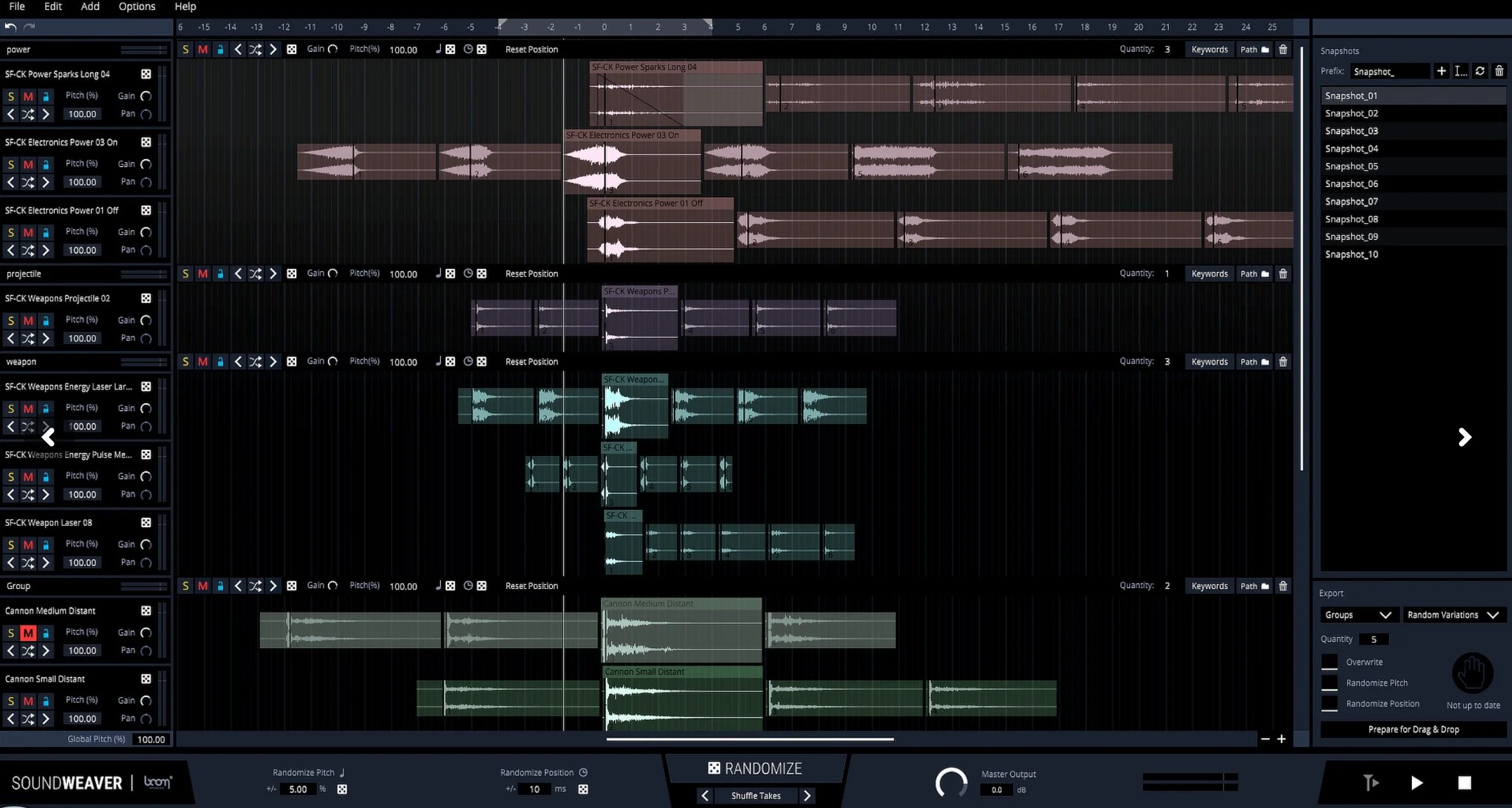Sometimes it’s good to revisit the highlights! Our Inside Sound Design series has given us the chance to pull back the curtain and share the creative process behind some of our favorite projects. Whether you missed them the first time around or just want a fresh dose of sound design inspiration, here are five of our favorites (plus a bonus honorable mention) that worth another look!
Viewing entries tagged
sound mixing
What does a Mustang, a parking lot, and ten pounds of ice have in common? They’ve all played starring roles in our journey to capture our own custom sound effects for shows like Teenage Mutant Ninja Turtles and more. In sound design, originality matters. Whether it’s the roar of the Shellraiser or the chilling movement of an Ice Dragon, there’s no substitute for getting your hands dirty and your mic in the middle of it all.
We’ve gathered five of our favorite behind-the-scenes recording sessions that showcase what it takes to build immersive, character-driven sound from scratch. Each one includes real recording footage, final demo clips, and a glimpse into the creative process. Hope you enjoy!
With Spring in full effect and Summer right around the corner, the world is becoming more and more inviting to explore and record! We felt it was the perfect time to revisit some of the field recording blog posts we’ve written over the years that may have been forgotten deep in the blog archives. So here are the top 5 we’ve let resurface for your reading pleasure, to serve as inspiration and a guide for returning to the field!
As sound professionals, we always have our ears open for interesting sounds. This isn’t limited to just sound effects I can record but also interesting ways sound can interact with the spaces we inhabit. Over the years, if I find myself in an especially interesting space, I’ve made a point of recording myself clapping once, so that I can later farm that sound as an Impulse Response, recreating the space. This practice carries the same nostalgic feelings as my field recordings, but expands the idea to my mixing. I can put any Impulse Response (the clap) through a reverb plugin that will, like magic, recreate that space. You too can be out there capturing wild and interesting spaces for your work!
As a re-recording mixer, it’s our job to create the final sound balance for a film or TV project. Here at Boom Box Post, we edit and prep both the dialogue and sound effects. The score however comes directly from the composers. The music has been both organized and mixed but it’s now our job to fit it in to the rest of the soundtrack. That’s where this post comes in. For this Music Mixing Basics posts, I’ll be covering the steps we take to work the score into the final mix.
I’ve recently been messing around with Soundweaver from Boom Library and I couldn’t wait to share my thoughts with our readers.
Lunch and Learns are a staple tradition here at Boom Box. These monthly meetings are chances for the team to learn from one another and explore different topics in sound and post production. We have done many Lunch and Learns since Boom Box’s inception ranging from plugin tutorials, to recording techniques, to tips for leading a team of editors.
We recently finished construction on our brand new post sound facility in Burbank, CA. One of our top priorities was to have multiple mix stages under our roof, all of which ready for Dolby Atmos. The way we saw it, we might as well be on the forefront of this emerging format. Building a mix stage is challenging enough, but adding in the extra Atmos considerations meant we would be faced with lots of opportunities to learn. Lucky for us, we are all about continuing to learn here at Boom Box Post! It’s in that spirit that I want to share with you some of the details of our journey.
We have dozens of blog posts on how you can level up your sound editorial game. This post is intended to go beyond the basics - making sure you color code you work, cut for perspective, etc. This isn't about missing deadlines or forgetting to clean up markers in your session before turning in your work. These are mistakes that even seasoned sound editors make all the time. Avoiding these seemingly small mistakes could make a big difference in how you are perceived by your supervisors and those mixing your work.
Have you ever been watching a video on youtube or streaming a song online and wished you could boost the bass, tweak the mids, or even-out the high end? Well, what if I told you there was a chrome extension that allowed you to EQ any audio source in your browser window? Introducing Ears: Bass Boost, EQ Any Audio!
As a mixer, I see all kinds of issues cropping up that originated in sound editorial. And with my background in sound editorial, I’ve surely committed every one of them myself at some point. Here’s a list of some common problems we see on the mix stage. Avoiding these problems will not only make your work easier to handle and more professionally presented, it will hopefully save you a snarky email or comment from a mixer!
Earlier this year, the team from The Loud House approached us with a brand new short designed as a 360° video for YouTube. Never having worked in this format, I did some searching and was surprised at how little information had been published on sound for spatialized video. After working it out for myself, I thought I’d share the details with our readers as a jumping off point should a project like this come across your desk.
I often times need to pitch dialogue on the mix stage. For this week’s blog post, I wanted to pit a few built in Pro Tools pitching plugins as well as some affordable alternatives against one another. Is there a one size fits all option for pitching? Do some plugins work better in certain situations than others? I’m not ashamed to say I had never taken the time to do a comprehensive head to head test until now. The results were very surprising.














